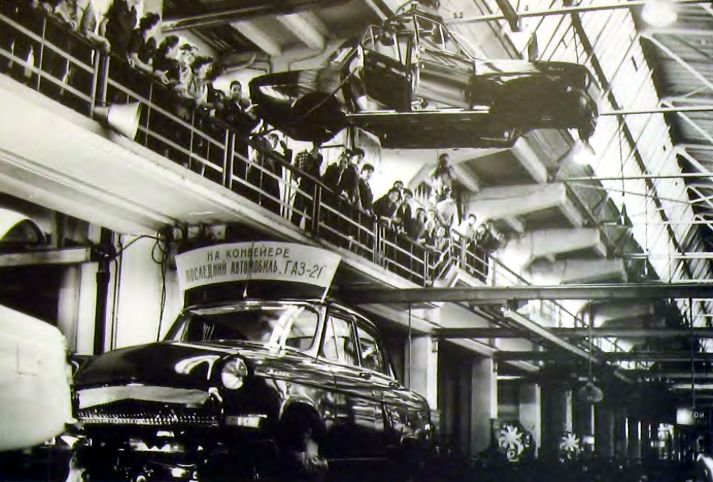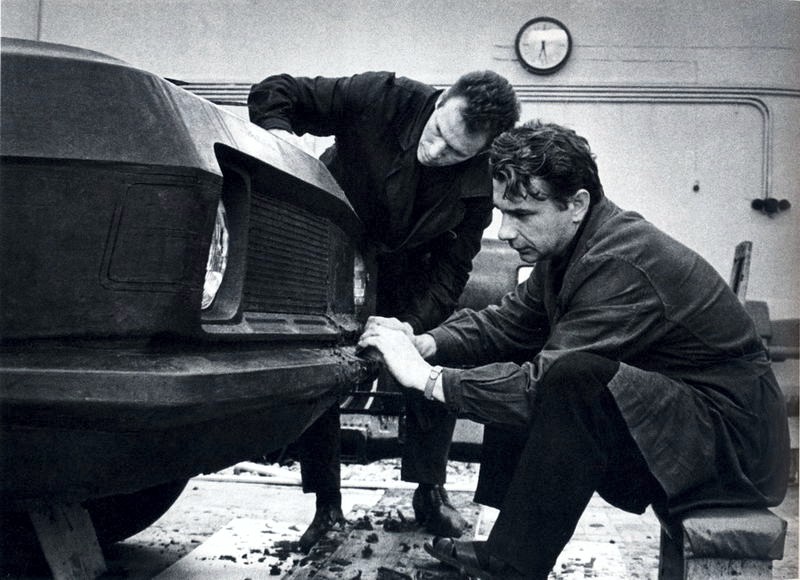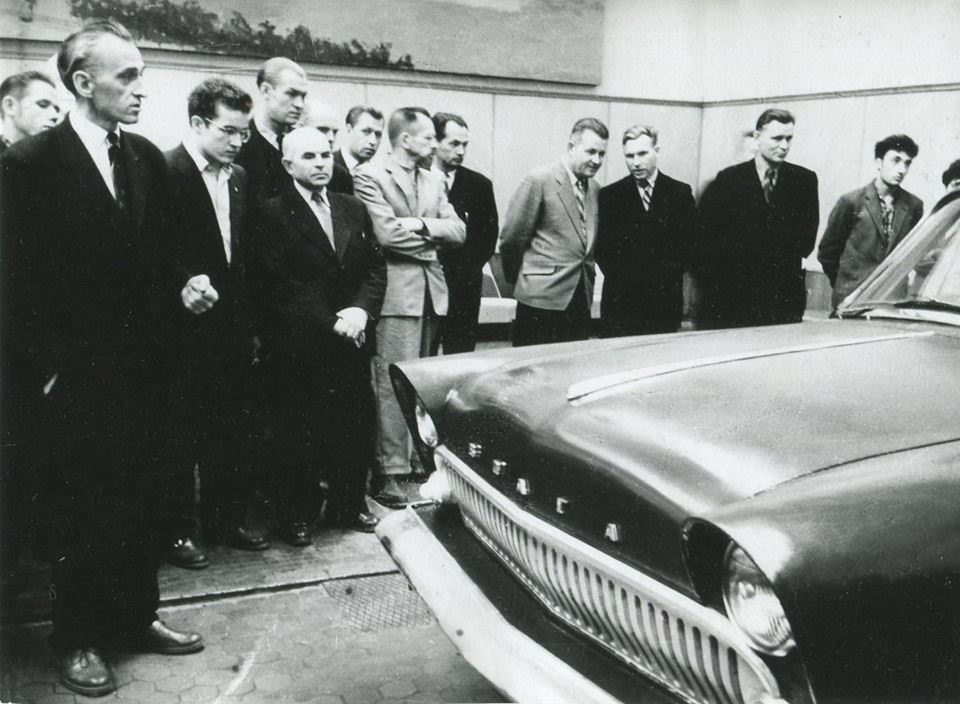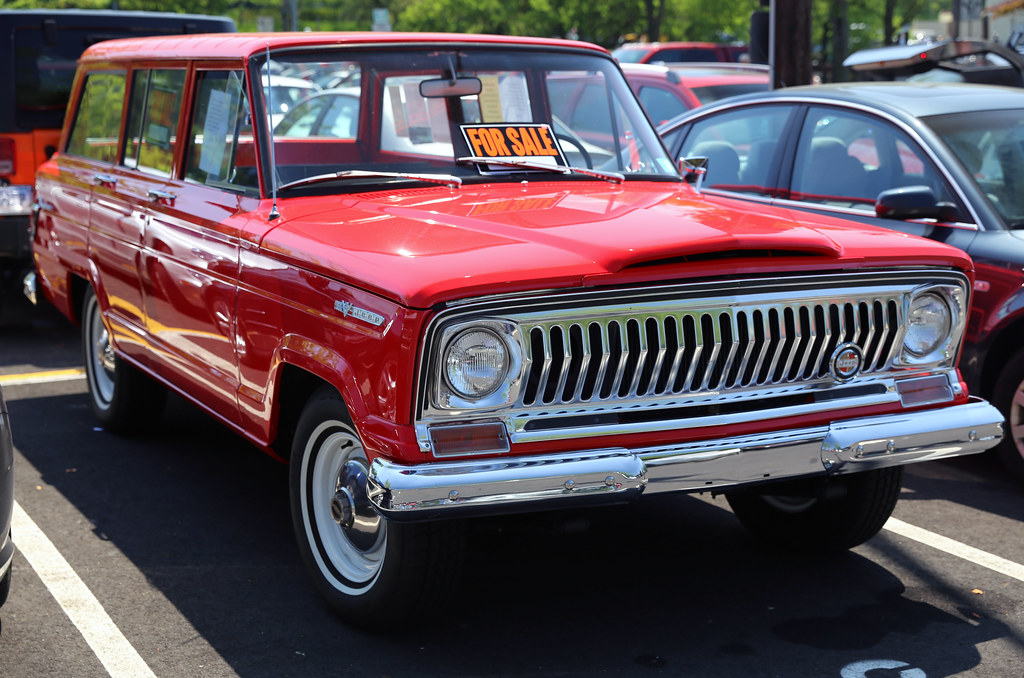Short answer: GAZ plant, passenger car, second type, fifth model.
Long answer:
The numbering system used by GAZ from 1940s to 1970s was actually fairly simple.
First digit indicates vehicle type, as following:
- 1 — "senior" family of passenger cars, with engine displacement of 3500 cc or larger (GAZ-11, GAZ-12, GAZ-13, GAZ-14);
- 2 — "junior" family of passenger cars, with engine displacement not exceeding 3500 cc (GAZ-20, GAZ-21, GAZ-22, GAZ-24);
- 3 — multi-axle trucks (GAZ-30, GAZ-33, GAZ-34);
- 4 — special purpose vehicles (GAZ-42 wood-gas generator truck, GAZ-46, GAZ-47, GAZ-49 = BTR-60 armored transporter);
- 5 — medium trucks (GAZ-51, GAZ-52, GAZ-53);
- 6 — all-wheel drive cars & trucks (GAZ-61, GAZ-62, GAZ-64, GAZ-67, GAZ-69, GAZ-63, GAZ-66).
- 7 — miscellaneous other models (GAZ-70 = T-70 light tank, GAZ-71 = GT-SM tracked transporter, GAZ-72 4x4 car, GAZ-75 tank destroyer, etc.)
And the second digit is just the sequential number of the model, starting with zero.
Hence, GAZ-24 is the fifth model of the second type.
To make matters more complicated, GAZ didn't strictly adhere to this system all the time. E.g., GAZ-23 was a version of GAZ-21, which was a "junior" family car, equipped with a "senior" family 5530 cc engine, but it still received a "2" in its model designation.
To make matters even more complicated, until late 1950s some of the GAZ cars (but, strangely enough, not trucks) had a second designation, with letter "M" followed by the sequential number of the model. Like M-20 (GAZ-20), M-72 (GAZ-72), etc. That "M" stands for "Molotov", as the plant was named after Molotov from 1933 to 1956. "M" designations were kind of more official, while "GAZ" designations were used more in the internal documentation of the plant.
In addition to this alphanumeric nomenclature, some car models also had proper names, such as ZIM (GAZ-12) or Pobyeda (GAZ-20 or M-20).
"Volga" (after Volga river) initially had been such a name, used strictly for GAZ-21 model, but it kind of stuck and was later used for the whole "junior" family of GAZ cars (GAZ-22, GAZ-23, GAZ-24 and the later models that were numbered in accordance with the new standardized model numbering system, starting with GAZ-3102 in year 1982).
- 1970: 9 000 roubles;
- c. 1971: 1,625 roubles in Vneshposyltorg checks (which were used for paying in the Beryozka and similar store chains);
- c. 1973: 9,193 roubles;
- 1975:
- GAZ-24 - 9,273 roubles in cash, or 1,900 roubles in Vneshposyltorg checks;
- GAZ-24-02 (wagon) - 2,440 roubles in Vneshposyltorg checks;
- 1979:
- GAZ-24 - 9,513 roubles;
- GAZ-24-02 - 14,000 roubles;
- 1982:
- GAZ-24 - 15,000 roubles;
- GAZ-24-02 - 18,000 roubles;
- 1987:
- GAZ-24-10 - 16,200...16,700 roubles (depending on options);
- GAZ-24-12 (wagon) - 19,570 roubles.
These prices are in Soviet roubles, and essentially cannot be adequately converted into foreign currencies because of the unique nature of the Soviet economy. For some sense of scale, average monthly wages in USSR can be found on this site (in Russian, but you only need the tables).
High prices were used as a way to reduce waiting lists, as demand was always greater than supply, creating a shortage of cars. Especially so with GAZ cars, as not all that many of them were produced annually to begin with, and most were immediately distributed among various fleets. Volga wagons were in especially short supply, for multiple reasons, and until mid-1970s they were not available for private purchase at all.
"Ordinary" people who wanted a Volga bought used cars as a rule, often those that were written-off by state-owned organizations and, most likely, needed extensive repairs (but were available at a fraction of the cost of a new one).
A really good used Volga in "like new" condition, on the other hand, would sell at a hefty premium over the official state price on the "gray" market (people who had the money readily payed extra to buy a car "here and now", instead of waiting for several years).
In 1989...1990 state-set prices for most goods were abolished; plants and trade organizations were allowed to set prices as they saw fit. As the result, prices instantly skyrocketed, closing to the market values based on the balance of supply and demand (supply was short, and demand high).
In 1991, GAZ-24-10 was sold for 30,000 roubles, GAZ-24-12 cost 35,000, and GAZ-3102 - a whopping 40,000.
I do not want to make any generalized statements on this subject, so I'll just tell you who were the original owners of the cars that I personally owned, or were/are owned by people I know.
- '74 GAZ-24: the car was bought at Beryozka store after a businesses trip to Cuba (as the family legend goes).
- '83 GAZ-24: professor at the Lobachevsky State University of Gorky city.
- '59 GAZ-21I: director of Mosvodokanal ? (may be legendary)
- '65 GAZ-21R: lead engineer of a chemical plant in Dzerzhinsk;
- '65 GAZ-21R: scientist from Arzamas-16, co-inventor of the explosive magnetic generator, USSR patent 794699 (don't ask...)
- '61 GAZ-21I: unknown, but also lived and worked in Arzamas-16, most likely a scientist or an engineer.
- '66 GAZ-21R: engineer, worked at Krasnoye Sormovo Factory No. 112 (a shipyard in Gorky city).
- '76 GAZ-24-02 wagon: sportsman, Honored Master of Sports of the USSR, twice all-round world champion in group aerobatics (1974 & 1980).
- Unknown year GAZ-24 or 24-10: aircraft factory test pilot.
- 1970 GAZ-24 (very early car, one of the first 2000 built): GAZ engineer.
The pattern is quite clear to me - people who had the money, but did not have the privilege of being assigned a state-owned car with driver.
It's a complicated question. In fact, the answer depends on your definition of a "luxurious car".
First of all, the very concept of a "luxury car" doesn't seem to be all that applicable in this case. The Volga was a large car (for the time and place), and hence an expensive car, but it did not have any distinguishing features of a luxury car, such as - powerful engine, upmarket interior, higher level of trim & equipment, etc. And it was definitely not designed to be one.
It was a generously sized family car, with a lot of room, suitable for long road trips across the country and able to carry a lot of stuff, rugged and durable, but with a relatively primitive interior and only enough power not to be a hindrance on the road. That definitely doesn't sound like a luxury car.
Some people still looked at it this way, however, just because of the price.
If we are speaking about "prestigious" cars, top-of-the-line models by Lada were only slightly less expensive, and definitely not less prestigious, than the Volga. They were also faster, sportier, had better interior trim and exterior fit & finish.
Compared to the Volga, something like VAZ-2103 looked like a luxury/sporty compact sedan. Much like a 3rd series BMW compared to a Ford Taurus. Call that a luxury car, if you really want.
Lada Niva is another serious contender for the title, as its sticker price was roughly the same, or even higher than the Volga's, making it ridiculously expensive, and also ludicrously impractical by the standards of the time because of its cramped two-door body. Being impractical and expensive seems to be just the definition of luxury.
It kind of does, but at the same time it kind of doesn't.
 Elaborating. GAZ-24 Volga has a front subframe that supports the engine and front suspension. This subframe is welded to the floor of the passenger compartment and completely integral with the body. It is, however, officially called "frame" in factory documentation, and, in fact, it looks like a short frame with two longitudinal and four transverse members.
Elaborating. GAZ-24 Volga has a front subframe that supports the engine and front suspension. This subframe is welded to the floor of the passenger compartment and completely integral with the body. It is, however, officially called "frame" in factory documentation, and, in fact, it looks like a short frame with two longitudinal and four transverse members.
So, it does have a frame (kind of), but is not a body-on-frame car.

 It was also assembled like a unit-body car would be - by lowering a preassembled body, with the subframe connected to it, onto the front and rear suspensions, engine and transmission (as all Pobyeda and Volga cars were).
It was also assembled like a unit-body car would be - by lowering a preassembled body, with the subframe connected to it, onto the front and rear suspensions, engine and transmission (as all Pobyeda and Volga cars were).
Body-on-frame cars are assembled in a different manner: the body is lowered onto the complete rolling chassis, including the frame.
 Volga GAZ-24 was styled by a tandem of GAZ designers, Leonid Tsikalenko and Nikolay Kireyev, during the first half of 1960s. The final version was approved in January, 1964.
Volga GAZ-24 was styled by a tandem of GAZ designers, Leonid Tsikalenko and Nikolay Kireyev, during the first half of 1960s. The final version was approved in January, 1964.
Leonid (Leniy) Ivanovitch Tsikalenko (1930-1996) was a well known Soviet sculptor and graphic designer. After 1975 he left GAZ and worked for the USSR Art Foundation.
Nikolay Ivanovitch Kireyev is mostly famous as the lead stylist of the GAZelle family of commercial vehicles.
 In fact, its use by GAZ predates the Falcon model with a somewhat similar grille by at least several years. This prototype was built around 1960:
In fact, its use by GAZ predates the Falcon model with a somewhat similar grille by at least several years. This prototype was built around 1960:
This style of the grille was just a further development of the vertical bars theme that had been used on many GAZ cars since 1940s (GAZ-51, GAZ-69, 2nd series GAZ-21, etc.). The claim that it is some kind of a copy of a foreign design, therefore, is quite ridiculous, as the compact Ford got its "waterfall" grille only for 1962 model year.
Also, the pattern is only superficially similar:
 Each vertical bar of the Falcon grille is split in two and has a small horizontal bar at the point of the "V". That's a somewhat similar design, all right - but not even remotely the exact same thing.
Each vertical bar of the Falcon grille is split in two and has a small horizontal bar at the point of the "V". That's a somewhat similar design, all right - but not even remotely the exact same thing.
Similar frontal styling was used on '62 - '64 Dodges, as well as '67 - '71 Jeep Wagoneer - just to name a few:
To some extent, yes. However, this engine was not designed for high power output to begin with, and almost no aftermarket performance parts are available for it.
Therefore, it is very different from "hopping-up", say, a popular American engine from the same time frame, with a lot of readily available stuff to choose from - expect making everything entirely by yourself, in the old good way.
Among the few exceptions are camshafts, which come in some assortment from one or two manufacturers in Russia, mostly for off-roading or racing applications (but most of these racing 'shafts are in fact quite "mild" by real hot-rodding standards). Custom pistons, steel pushrods, bronze valve guides, adjustable timing gears and some other relatively minor parts can also be purchased. But don't expect readily available performance oriented heads, intakes, crankshafts, etc.
For the most part, performance tuning of these engines is limited to modifying the stock parts and/or retrofitting parts from the newer factory versions by ZMZ & UMZ. That, in turn, severely limits the amount of possible modifications and the resulting output.
It is relatively simple to get slightly more power out of these engines by making improvements to carburetion & ignition, increasing compression ratio, porting the heads, building better headers and exhaust system, etc. In fact, I strongly recommend making some basic performance upgrades if you are going to rebuild the engine anyway, because that makes the car more drivable in modern traffic. However, anything beyond that would most likely require an unreasonable amount of effort and/or money.
The upper limit for a street engine is probably 120...130 hp. Racing engines can have about 150 hp @ 6500...7000 RPM, but they are completely impractical for street use, with no low-end power and a stable idle at as high as ~2000 RPM.
If you are aiming at some real performance, engine swap is the natural choice. The engine bay is large enough to accommodate a small-block V8 without much modifications, and the stock rear axle did hold almost 200 bhp & 400 N·m without much complains on factory V8 powered cars. Dana 30 axle used on Volvo cars is a popular replacement (with custom made leaf spring perches).


